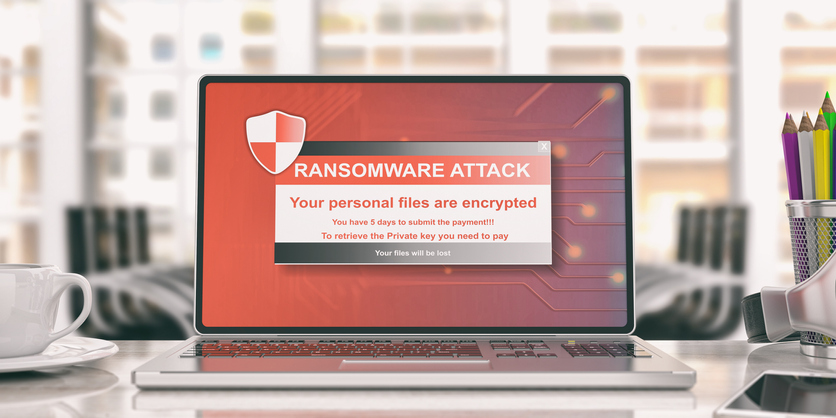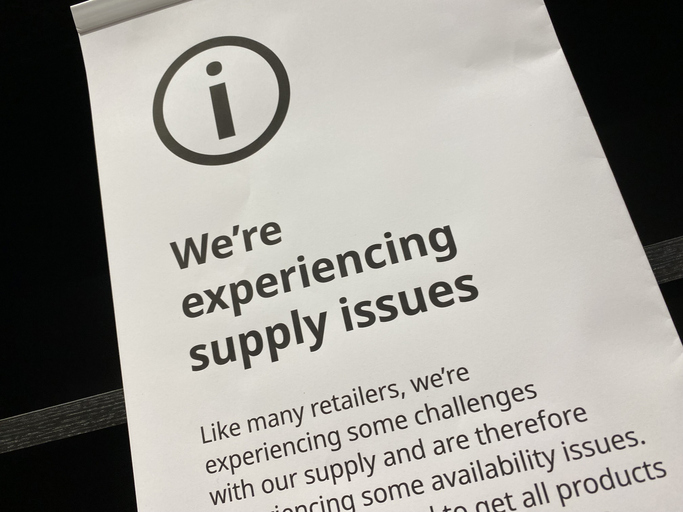
by Felicien | May 12, 2022 | Education
157-Year-Old Lincoln College Succumbed To A Ransomware Attack
On May 13th, 2022, a college that has remained open through two world wars, the 1918 Spanish flu epidemic, and the Great Depression will close its doors. The college has been struggling to stay afloat in recent years, and the coronavirus pandemic and a recent ransomware attack have dealt a fatal blow.
The college’s closure will be a significant loss for the community, as it has been a source of education and employment for many generations. The college’s decision to close is a sign of the times, as more and more colleges face financial difficulties due to the pandemic.
It is an unfortunate reality that the long-standing institution will soon be no more.
Lincoln College — a historically Black college in rural central Illinois that broke ground on President Abraham Lincoln’s birthday in 1865 — tried but failed to raise enough money to recover from the combined impact of COVID-19 and a December cyber attack, David Gerlach, the college’s president, said in a statement.
The college had hoped to use the funds to cover expenses related to the pandemic and the cyberattack, which shut down the school’s computer systems and caused “significant financial losses.” According to Gerlach, the college has made some progress in restoring its systems, but it is still facing “major challenges.”
He did not say how much money the school was seeking or where the funds would come from. The news comes as many Historically Black Colleges and Universities (HBCUs) are struggling to stay afloat amid the pandemic. Earlier this month, Maryland’s Bowie State University announced laying off more than 100 employees.
And last year, Florida A&M University laid off nearly 200 employees and imposed a hiring freeze to cut costs. With their already tight budgets, HBCUs have been hit hard by the pandemic, which has led to a decline in enrollment and revenue.
Ransomware Blocks Access To Critical Information
Lincoln College, which has roughly 600 students, saw its enrollment fall after the coronavirus hit, disrupting its operations and finances. As the school struggled to stay afloat, a ransomware attack blocked the college from accessing data used in its student recruitment and retention and fundraising efforts.
The attack, which occurred over the summer, was particularly damaging because it came when the college was already facing significant financial challenges. Lincoln is just one of many colleges that have been hit by ransomware attacks in recent years.
These attacks have cost colleges millions of dollars in damages and have led to disruptions in campus operations. They have even forced schools to close their doors permanently in some cases. Given the financial challenges that many colleges are currently facing, it is likely that we will see even more ransomware attacks in the coming years.
According to the school’s statement, by the time Lincoln regained access to its vital computer systems in March, estimates had shown “significant enrollment shortfalls” requiring a “transformational donation or partnership to sustain Lincoln College beyond the current semester,” the school’s statement outlined. The shortfall was caused by a malware attack that shut down the college’s online and on-campus operations for nearly two weeks.
The attack also disrupted the school’s ability to process new applications, causing a drop in incoming students.

by Felicien | Apr 30, 2022 | Education
Zero Trust Networks: What Are They?
The internet has brought a world of opportunity for businesses. It is easy for companies to reach out to consumers and offer them products or services without a physical storefront. However, this also opens businesses up to the risk of data breaches and cyber attacks. Cyber attacks can be costly, and data breaches can damage your business’s reputation.
To protect your business, you need to be aware of the risks and take steps to mitigate them. Cyber insurance can help cover the costs of a data breach or cyber-attack, and a cyber security plan can help you protect your business from these threats.
By taking these steps, you can help ensure that your business is protected from the risks of operating online.
There is no one-size-fits-all solution for determining whether you should implement zero-trust network access in your organization. Instead, the best way to decide whether this security model is suitable for you depends on the level of risk your business faces and the type of data you store on your network.
For businesses dealing with highly sensitive or proprietary information, implementing zero trust is a must. Without strict controls, there is a significant risk that your information could fall into the wrong hands and be used for malicious purposes. Furthermore, the increased regulatory requirements and cyber threats facing businesses today mean that protecting sensitive data must be a top priority if you want to avoid costly fines and reputation damage.
On the other hand, if your business doesn’t handle any sensitive or proprietary data, zero-trust may not be as critical to securing your network. However, implementing zero trust can still help protect against common threats like phishing scams and malware attacks, even in these cases. Furthermore, limiting access to less important or lower-risk assets on your network can help ensure that your most valuable data remains secure even if there is a breach elsewhere on the network. Ultimately, whether or not to implement zero-trust network access should be based on the unique needs and risks of your organization.
If you are considering implementing zero trust in your organization, there are a few things to keep in mind.
First, zero trust is not a silver bullet that will magically make your network impenetrable. It is important to remember that no security measure is 100% effective and that zero trust should be just one part of a comprehensive security strategy.
Second, zero trust requires a significant investment of time and resources to implement correctly. To be effective, zero trust must be integrated into every aspect of your network, from your infrastructure and applications to your end-users and devices.
Finally, it is essential to remember that a zero-trust network is a constantly evolving entity. Your security measures will need to be updated as new threats emerge and your network changes over time.
If you are looking for a way to improve the security of your network, zero trust may be the right solution for you. By taking steps to limit access and protect your data, you can help ensure that your business is protected from cyber-attacks.
What Is Zero Trust Network Access?
At its core, a zero-trust network access policy is all about limiting access to sensitive data based on the security of a given endpoint. This means that if an endpoint cannot be verified, it won’t have access to any critical or confidential information on the network. By limiting access in this way, zero-trust policies help to protect against threats and keep data secure. They also ensure that only authorized and authenticated users can use and connect to services on their devices or computers. Overall, a zero-trust network access policy is essential for businesses looking to protect their most sensitive information and maintain their digital integrity.
Any effective security policy must consider the fact that employees are the weak link in the security chain. No matter how strong your technical defenses are, they can be easily circumvented if an employee accidentally discloses sensitive data. That’s why it’s crucial to have a policy that limits user access based on the trust level. By only allowing users to access the data they need to do their jobs, you can reduce the chances of accidental disclosure. And by requiring users to log into the system with a unique username and password, you can ensure that only authorized users are accessing the data. You can help protect your company’s sensitive data from accidental disclosure by taking these steps.
Why Zero Trust Networks Are Crucial For Today’s Business
A zero-trust network is a critical component of any business. By creating this secure and reliable system, companies can ensure that their employees have the tools and information they need to do their jobs efficiently, without the risk of malicious acts or cyber attacks. This promotes a healthy work environment, but it also reduces the overall risk for the company as a whole.
With a zero-trust network in place, companies can grant much more flexibility and access to individuals within their organizations. These employees can then use applications and other resources designed specifically for their particular roles, increasing productivity and efficiency. Moreover, by giving certain employees far more flexibility than others within the same organization, companies can achieve new levels of collaboration while still protecting sensitive data from prying eyes.
Overall, a zero-trust network is essential for any business that wants to create an effective and safe working environment for its employees. By empowering these individuals with access to valuable resources while at the same time limiting their ability to make mistakes or act maliciously, businesses can reduce their risk and thrive in today’s fast-paced digital economy.
Zero Trust Policies
Zero-trust policies are vital for organizations that want to stay protected against cybersecurity threats. These policies take a proactive approach, actively monitoring and restricting access to data regardless of where the user is coming from or what device they are using. And the benefits of these policies speak for themselves: businesses that have implemented zero-trust policies have been able to significantly reduce the risk of cyber-attacks while maintaining high levels of data transfer speeds and productivity throughout their organization.
But what does the future hold for zero-trust policies? According to recent research carried out by Microsoft, nearly all security decision-makers believe that zero-trust is critical to business success in today’s digital world. This suggests that zero-trust will continue to be on the rise in the years ahead, offering organizations unparalleled protection against cyber threats without compromising speed or efficiency. In a landscape where data breaches seem more common than ever, embracing zero trust may be one of the most effective ways to keep companies safe and secure in our increasingly digitized world.
Any business that handles sensitive customer data needs to have a zero-trust network access policy. This policy ensures that only authorized users can access the network and that all data passing through the network is encrypted. The benefits of a zero-trust network are manifold. It reduces the risk of data breaches, improves productivity and engagement, and cuts costs for businesses. For employees, it increases job satisfaction and peace of mind. In today’s increasingly interconnected world, a zero-trust network access policy is essential for any business that wants to protect its data and reputation.
The Overall Benefits Of Zero Trust Networks
Protection For Your Remote Workforce
A zero-trust network is an excellent way to secure your remote workforce. Many companies don’t take the time to think about their remote staff’s level of access. This can lead to a dangerous situation where employees have full access to an asset they shouldn’t.
A zero-trust network addresses this issue in a few different ways. First, you can create different user access levels depending on an individual’s level of access. This can help give teams clear guidelines for what each remote worker can do. For example, if an employee only needs to access files on a specific server, they should only be given access to that server and no others. By contrast, if an employee needs to be able to access multiple servers, they should be given appropriate levels of access to those servers. This system of user access levels helps ensure that each remote worker only has the level of access they need and no more.
In addition, a zero-trust network can help improve communication between remote workers and the rest of the company. Often, communication breakdowns happen because employees feel like they are being left out of the loop or are not being given enough information. With a zero-trust network, this is less likely to happen. Instead of relying on outdated emails or documents, remote workers can be given access to a secure intranet where they can find the most up-to-date information. This helps ensure that everyone is on the same page, and it can improve communication throughout the company.
Data Breach Risk Lowered
A data breach is one of the biggest threats to businesses today. When someone gains unauthorized access to your network and obtains sensitive information from your server, they can use this information for malicious purposes, like identity theft or fraud.
However, a key benefit of having a zero-trust network is that it makes data breaches much harder. This is because strong security and access policies help you control who has access to what. You can also update these policies quickly if they become outdated or new threats emerge, which means that your network will always be protected against emerging vulnerabilities.
Therefore, by adopting a zero-trust policy and ensuring that your network is secure and protected, you can significantly reduce the risk of data breaches and protect your business against costly cyberattacks.
Keep Confidential Business Information Secure
Another key benefit of having a zero-trust network is that it can help protect your private business information. Many companies don’t take the time to think about their remote staff’s level of access. This can lead to a dangerous situation where employees have full access to an asset they shouldn’t.
A zero-trust network addresses this issue in a few different ways. First, you can create different user access levels depending on an individual’s level of access. This can help give teams clear guidelines for what each remote worker can do. Second, all data passing through the network is encrypted, so even if an unauthorized person were to gain access, they wouldn’t be able to read it. Finally, zero-trust networks are designed with security in mind from the ground up, so you can be confident that your data is safe.
Looking Ahead For Zero-Trust Networks
In today’s world, data security is more important than ever. With the rise of digital transformation, more and more businesses are moving their data online. This makes it easier for cybercriminals to target companies and steal sensitive information. A zero-trust network can help protect businesses against these threats by ensuring that only authorized users have access to sensitive data.
We can expect to see more businesses embrace zero-trust networks in the years ahead. As the world becomes more digitized, the need for these types of networks will only grow. Companies that want to protect their data and reputation need to take action now – before it’s too late. By embracing zero trust, businesses can stay one step ahead of cybercriminals and keep their data safe.
Secure Your Business Network
In today’s fast-paced business world, nearly every employee needs access to the company network. This makes it easy for employees to collaborate and stay on top of their work, posing some significant risks. With so many people accessing the network worldwide, there is a greater danger of data breaches and hacking attempts. To address these risks, many companies are beginning to implement zero-trust network access policies – a set of guidelines designed to limit the network access of remote employees and limit their potential for data breaches.
These policies typically involve a multi-step verification process that includes strict authentication protocols like two-factor authentication or biometric scanning. By requiring comprehensive verification each time someone logs in remotely, the zero-trust approach ensures that only authorized users have access to sensitive information within the company network. Not only does this help minimize the risk of data breaches, but it can also help businesses maintain higher security standards overall as they adapt and prepare for future threats. So if you’re looking for ways to improve your business’s cyber security practices, consider taking a page from this book and implementing zero-trust network access policies in your organization today.

by Felicien | Apr 21, 2022 | Education
Can Ransomware Spread Through WiFi?
Ransomware has been a menace to businesses large and small for years, and the problem is only getting worse. One of the most insidious aspects of ransomware is its ability to spread through wifi networks, infecting multiple computers and devices.
This can cause severe disruptions to business operations, as employees are unable to access their files or applications. In some cases, ransomware can even render entire networks unusable. While there are steps that businesses can take to protect themselves from these attacks, such as implementing robust security measures and backing up data, the best defense is often proactive detection and response.
By ensuring that their networks are constantly monitored for suspicious activity, businesses can reduce the chances of being hit by a ransomware attack.
How Does Ransomware Spread Through A Network?
The increase in ransomware attacks is a serious concern for businesses of all sizes. Ransomware is a type of malware that encrypts a victim’s files and demands a ransom be paid in order to decrypt them. Attackers are constantly finding new ways to spread ransomware, and the amount of ransom demanded has been increasing.
This has led to businesses losing access to critical data and facing significant financial losses. The best way to protect yourself from ransomware is to have a good backup strategy in place. This will ensure that you can recover your data if you do become a victim of an attack. You should also make sure that your security software is up to date, and that you only download apps and software from trusted sources.
By taking these precautions, you can help to protect your business from the growing threat of ransomware attacks.
Who Does Ransomware Typically Target?
Despite ransomware becoming more prevalent in society, many people are still unaware of what it is and how it works. Ransomware is a type of malware that encrypts a victim’s files and holds them for ransom.
The attackers usually demand a ransom in cryptocurrency, which is difficult to trace. In some cases, the attackers will release the victim’s files after the ransom is paid; however, there is no guarantee that the files will be released or that they will be decrypted correctly.
Many times, the victims of ransomware attacks are left with no choice but to pay the ransom or lose their data forever.
Recently, ransomware has been used to target critical infrastructure, such as the Colonial Pipeline attack in 2021. This attack disrupted the flow of oil across the eastern United States. Cybercriminals have also started to target supply chains, such as when remote management software vendor Kaseya fell victim to the REvil ransomware.
These attacks have highlighted the need for organizations to be prepared for a ransomware attack and have a plan in place to respond quickly.
Securing Your Wireless Network From Spreading Ransomware
Business wireless networks are becoming increasingly popular as more and more people connect their devices to the internet. However, as the number of devices connected to the internet grows, so does the risk of cyberattacks.
One way to protect your business network from intrusion is to keep your wifi access password protected. Many routers come with a default password that is easy to guess, so it’s important to change it to something that is unique and difficult to crack.
In addition, it’s also a good idea to enable encryption on your router. This will make it more difficult for hackers to access your data. Finally, be sure to keep your router and firmware up-to-date with the latest security patches.
By following these simple steps, you can help protect your business’s wireless network from cyber threats and the spread of ransomware.

by Felicien | Apr 11, 2022 | Education
Network Equipment Shortages
The current state of microchips for network equipment is difficult at best, depending on a supply chain that can cross over 70 international borders and 31,000 miles before reaching its end destination, with processes in Texas, Michigan, Malaysia, Germany, and China before landing at the port in California for distribution. The many limitations in travel and supply chain staffing brought about by the COVID-19 pandemic have made what was already a just-in-time supply chain into a mess, one that’s expected to continue for the foreseeable future. With chip supply shortages contributing to lead times as far out as 400 days for your networking equipment, price increases due to inflation, and missed shipping dates, how will your company keep up?
In a recent report titled “What Are My Options for Dealing With Long Lead Times on Network Equipment?” Gartner mentioned, “We expect lead times to remain high through early 2023, at which point we expect slow incremental improvement over the course of months.” This leaves many companies scrambling to get their network hardware in place, with the report citing five ways to increase capability, but only one of which puts more hardware into your servers, while one is a touch on the sneaky side.
1) Optimize your existing hardware
Many company switches are operated at less than 75% port capacity, according to the report by Gartner, with campus and enterprise switches often underutilized so that rapid growth or cable simplification can be achieved. “We estimate at least 25% of campus and data center ports are unused, and likely more. Thus, reducing excess capacity via consolidating connectivity can readily free up 10% to 15% of switches for most enterprises, while leaving room for growth.” By using existing hardware effectively, you won’t have the option for growth in the future, but it may get you past the worst of the shortages and delays. It will require changes and recalling of the network, along with downtime and labor.
2) Move to the cloud
When you switch your network to the cloud, your hosting or cloud provider will have to come up with the network hardware, but because the hardware is often shared among many companies, there’s a lower overall demand for chips. This allows you to avoid having to purchase new data-center switches and similar equipment. In the report,
The solution to everything: Move to the cloud. Enterprises can avoid buying data-center switches and other hardware if they move workloads to hosting providers or public cloud providers. The report also recommended putting x86 servers in place instead of network appliances that have low interface counts, including routers, firewalls, and load balancers.
3) Move to the front
Vendors often prioritize customers that give them larger opportunities for revenue or loss of revenue, so consider competition at the vendor level. Threaten to take your business somewhere else and see if they’ll come around. As a new customer, make sure your vendors know that you represent significant future income. As the report states, “Vendors are prioritizing customers that represent larger revenue opportunities and/or create the risk of revenue loss.” This allows you to avoid having to wait in line for a first-in, first-out order approach and may get you what you need.
4) Consider certified refurbished equipment
What happens to relatively new equipment that isn’t used for very long? It’s refurbished and resold. Though it’s not brand new, the recertification process still provides you with some protection in terms of a warranty or similar benefits. This can include equipment from top brands including Cisco and HPE Aruba. Though the equipment maybe a little older, the lead time is often only days to weeks versus months to over a year.
5) Wear it out
Many companies will change out hardware well before the end of its useful life by months to years. Just because you have a switch that is approaching the end of its warranty doesn’t mean it will immediately break down. Instead of automatically retiring it, try negotiating with your vendor to get an extended service contract to get more use out of existing assets.
These five solutions provide you with a range of options you may not have considered.

by Felicien | Mar 22, 2022 | Education
Slack vs. Microsoft Teams
Chat-based collaboration has been around for several years, but with the sudden impact at the beginning of the COVID-19 pandemic, Slack and Microsoft Teams both quickly rose to the forefront. But which one is better for your business? Whichever option you choose, you’re still the winner, because two great collaboration platforms provide you with the features you want. Here’s a six-category comparison to help you through the process.
Business Tech Blog: Slack vs. Teams
Interface and Usability
Appearance: For customization, go with Slack for a ton of options.
Navigation/Dashboard: Slack focuses on work channels to separate projects, teams or topics. Teams focuses on the people being brought into the collaboration.
In-App Help: Teams features Help icons at the bottom of the sidebar, including training, topics, and what’s new links, allowing you to browse or search. Slack’s in-app chatbot is super easy to use for fast answers.
Chat: Teams will provide an experience closer to a word processor, with additional colors, fonts, and similar options.
Video and Voice Conference: Slack integrates well with Zoom, Webex and others. Teams build in videoconferencing but can use other options.
Notification Control: Teams provides many notification options, while Slack provides superior Do Not Disturb controls.
Integrations
Microsoft 365/Office 365: Not surprisingly, being a Microsoft product, Teams is better at integrating the business productivity suite, along with integration to SharePoint and OneDrive. Slack also integrates, but not as far as Teams does.
Google Workspace: If you use Google-based options, such as Google Calendar, Gmail, and Google Drive, you’ll want to stick with Slack, because Teams doesn’t even try it.
Salesforce: Salesforce bought Slack in July 2021, allowing easy integration. View Slack messages tied to specific Salesforce records and Salesforce alerts on Slack channels. Teams integrates with it, but not as deeply.
Overall: Slack offers significantly more third-party app integrations, currently tying into over 2,400 apps versus Teams’ 700, with both apps providing the option to build customized apps and integrations, with Slack having about 935,000 customized apps.
Additional Noteworthy Features
Shared Channels: Slack Channels makes it easy to connect your workspace to a partner’s workspace, improving collaboration. Teams provides guest access for outside parties.
Scaling: Slack supports unlimited users and channels, with over 100,000 users per channel. Teams allow unlimited users, up to 25,000 participants per team, 200 channels per team, and 5,000 users per channel.
Translation: Teams offers onboard message translation in 36 different languages. Again, Slack uses app integrations such as the Rosetta Translator bot.
Mobile and Web Apps
In this category, Slack and Teams were very even, with similar functionality, features and usability.
Security, Compliance and Enterprise Management
Security: Both have similar layers and degrees of protection overall. However, integrations in Slack could open new vulnerabilities.
Encryption: Both apps encrypt data while in transit as well as in storage. A wide range of capabilities and apps keep your data secure.
Enterprise Key Management: Teams offers this to a certain extent, but Slack’s Enterprise Key Management lets you create encryption keys for messages and files.
Plans and Pricing
Free Options: Both apps provide free plans, but Teams is more generous, with unlimited meetings, messages, and search, up to 500 users, 2GB storage per user, 10GB shared storage, one-on-one chat, screen sharing, unlimited integrations, and encryption, while Slack has up to 10,000 messages, 10 integrations, one-on-one video calls, and two-factor authentication.
Slack Plans: Pro plan starts at $6.67/user/month and steps up to $12.50/user/month for Business+, with both billed annually. Enterprise Grid plan pricing requires contacting Slack sales. Paid plans provide unlimited access, messages, and much more.
Teams Plans: There are many plans for Teams, ranging from $5/user/month to $57/user/month, while adding more capability, such as scheduled meetings, recording, security, admin, and compliance features.
In Conclusion
Overall, Slack and Teams offer many of the same features. Consider what features you need and which option delivers those features best. If you do a great deal of Microsoft 365 work, consider giving Teams a long trial before switching. If, on the other hand, you tend to avoid vendor lock-in issues, are avidly using Salesforce, or use Google Workspace, give Slack a shot and see how well it will work for your enterprise.




